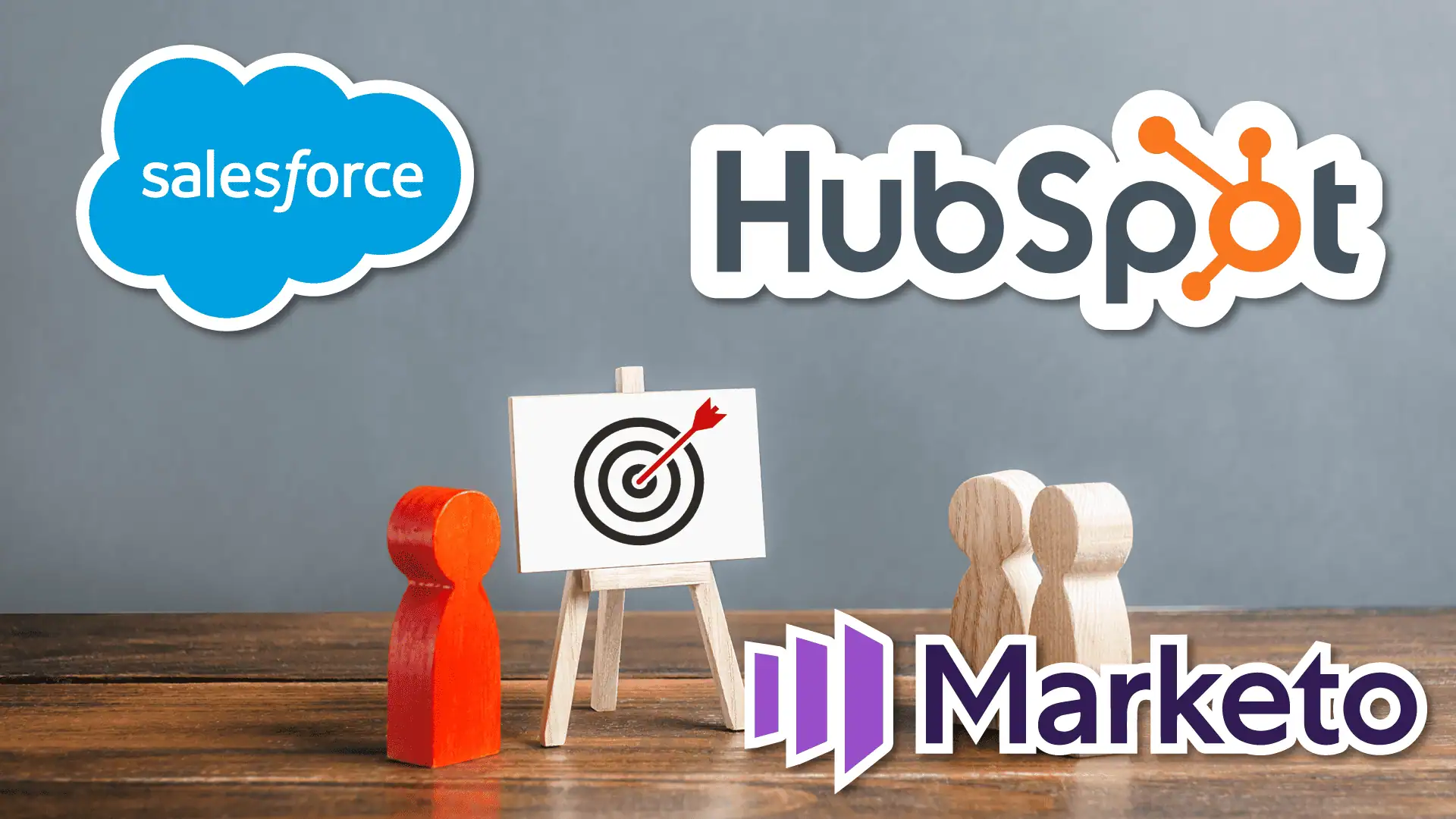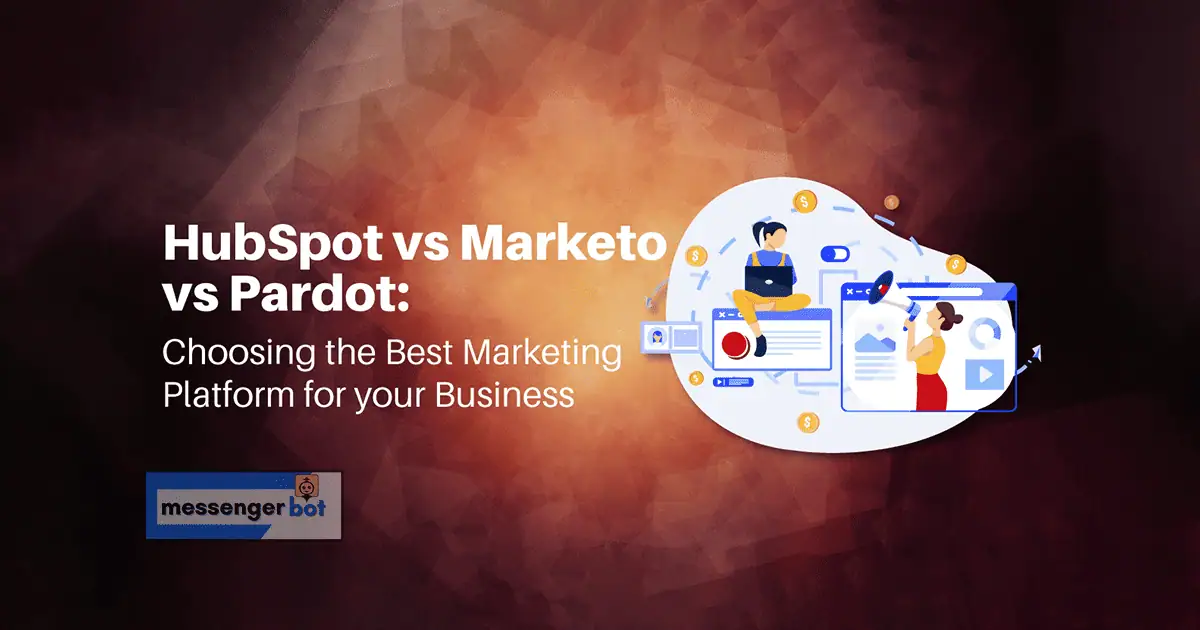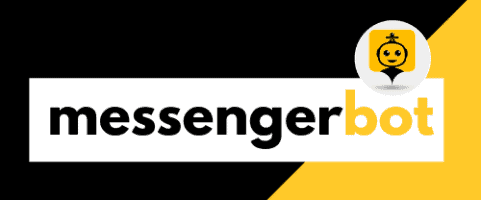Marketing automation has become a major trend for companies and individuals looking to improve their marketing efforts. But with so many systems to choose from, it can be difficult to decide which one is the best fit. In this blog post, we will compare Hubspot vs Marketo vs Pardot based on four key criteria: cost, scalability, integrations, and flexibility.
What is Marketo?

Marketo is a marketing automation platform that helps businesses create better experiences for their customers. Marketo is known as the go-to marketing automation platform for marketers who are looking to improve their businesses through data and analytics. Marketo can help you with lead generation, sales prospecting, email campaigns, social media management, and much more – all from one place!
Marketo is considered the top marketing automation platform because it has capabilities that are unmatched by other platforms. Marketo can help you manage your entire customer lifecycle – from first touchpoints with customers to providing them valuable content and nurturing relationships all through one place!
What is Pardot?

Pardot is one of the leading marketing automation systems on the planet, used by brands like Salesforce.com and Intuit to drive revenue through lead generation campaigns. Pardot is an easy-to-use tool that helps marketers create, launch, track & optimize highly personalized email programs at scale – resulting in more qualified leads for sales teams.
Pardot provides the marketing automation tools through which businesses can create, launch and optimize highly-targeted email campaigns at scale. This results in a greater number of qualified leads for sales teams to follow up on.
What is HubSpot?

HubSpot is an inbound marketing software company that was founded in 2006. They provide tools to help small and medium-sized businesses become “inbound marketers”, meaning they are able to attract customers through their blogging, social media, SEO (Search Engine Optimization), PPC (Pay Per Click) campaigns, and email outreach.
HubSpot offers a free plan for businesses with up to 25 contacts, allowing them to experience inbound marketing strategies and see if they are effective.
Hubspot allows users to post blog content on their website through a CMS (Content Management System). Users can also comment on these posts which helps improve SEO. They also offer a CRM (Customer Relationship Management) tool for users to track their contacts and leads through the website.
HubSpot helps businesses attract more visitors to their website who are interested in learning about the company and what they have to offer. This helps generate leads for potential customers, which allows the business owner/manager to communicate with these people through email outreach campaigns.
When to choose Pardot
Pardot is a good option if you are looking for an out-of-the-box marketing automation solution and integration capabilities. Pardot offers great integrations with Salesforce, Marketo, and Eloqua. Plus it has responsive design templates that look nice on all devices – which can be hard to find in most marketing automation tools!
When to choose Marketo
Marketo provides a user interface to create and track marketing campaigns that can be personalized for each individual customer.
Marketo is great because it has an easy drag-and-drop editor which helps you build dynamic email content quickly without having any design skills. In addition, the platform allows users to see how their campaigns are performing and what they need to improve.
When to Choose HubSpot
Choose HubSpot when you want a single tool that can do everything. HubSpot is an all-inclusive solution that integrates social media, blogging, email marketing, and more into one program for increased efficiency.
Comparing Features of Pardot vs HubSpot vs Marketo
The first thing to look at is your company’s size, what type of software you need, and how much money you are willing to spend. You might be surprised to learn that Pardot is the most affordable option.
All three platforms offer contact forms, landing pages, and lead capture. Each platform has its own way of analyzing your inbound leads so you can see where they are coming from. Using Pardot, you can see where your leads are coming from based on the city they live in.
CRM Integration

CRM Integration is a crucial feature for marketing automation because it allows the customer relationship management capabilities of your CRM to be used as an input into the automated workflow.
In other words, if you have created any rules or behaviors in Pardot based on information from your CRM, those actions would automatically occur within Salesforce without needing to set up complex integration flows.
Pardot’s CRM integration is a set of pre-built integrations with popular CRMs like Salesforce, NetSuite, and Highrise.
There isn’t an option to create custom integration flows within Pardot’s software as it only has native integrations for these three systems.
On the other hand, HubSpot offers additional flexibility by allowing you to choose from a list of integrations or even create your own custom integration.
Marketo also has pre-built integrations with most popular CRMs like Salesforce and NetSuite but it doesn’t have an option for creating custom integrations.
Pardot’s CRM integrations are easy to set up as you only need to connect your account with the system. After that, all activity performed within Salesforce will automatically flow into Pardot based on any rules or behaviors created in the software.
HubSpot’s CRM integration requires you to import a list of contacts from your email marketing platform. After that, all activity performed within Salesforce will automatically flow into HubSpot based on any rules or behaviors created in the software.
Marketo also has pre-built integrations with most popular CRMs like Salesforce and NetSuite but it doesn’t have an option for creating custom integrations.
In terms of CRM Integration, Pardot is the best option for CRM integration.
You can connect Pardot with the most popular CRMs like Salesforce and NetSuite in just a few steps without any complex setup or coding required.
HubSpot offers more flexibility by allowing you to choose from a list of integrations or even create your custom integration flow.
Marketo has pre-built integrations with most popular CRMs like Salesforce and NetSuite but it doesn’t have an option for creating custom integration flows.
Lead Nurturing

Lead nurturing is when you use a special drip campaign to follow up with leads who have shown interest in your company’s product or services. Marketing automation tools can send these messages at specific times to get them engaged with your business. Aside from that, it’s also important to structure the message in a way that will make them want more of what you are offering.
Lead nurturing is an excellent tool for increasing conversion rates and revenue, but only when it comes from companies with the right expertise. Additionally, lead generation software can help your business create content that attracts potential customers while staying on top of industry trends. This is a great way to keep your business ahead of the competition.
Pardot’s Lead Nurturing tool allows you to build a list of leads that have previously shown interest in your company. This is an excellent way to engage with them and get their attention so they will eventually become customers. Additionally, Pardot’s Lead Nurturing also comes with 100+ pre-built email templates for use when sending out messages
HubSpot has the option to use its Automation tool to send out lead nurturing emails. This leads customers through different stages of your sales process, which can increase conversion rates and revenue for your business.
Marketo also has the option to automatically create a drip campaign when using Lead Nurturing. This is an excellent way to engage with potential clients while staying on top of industry trends.
In terms of Lead nurturing, Pardot, HubSpot, and Marketo all have their benefits. However, Pardot provides the most freedom when it comes to pre-made templates for drip campaigns while both Marketo and HubSpot also allow you to use automation tools.
Pardot is the best choice for companies looking to create custom messages based on the different stages of your sales process. HubSpot is great if you want an easy way to send lead nurturing emails while staying on top of industry trends and Marketo also gives you 100+ pre-built templates for drip campaigns.
Attribution/Campaigns

Attribution/Campaigns is what is used to track how well your marketing campaigns are performing. It allows marketers and salespeople alike to determine which channels (email, social media) result in the most qualified leads and opportunities down the pipeline.
Attribution/Campaigns provides a clear picture of what marketing channels are working, and which ones might need improvement. This helps marketers allocate their resources more efficiently to the highest impact activities that move leads through the funnel faster.
Pardot’s Attribution/Campaigns feature provides the ability to measure your campaigns across multiple channels including email, web traffic, and social media.
HubSpot’s Attribution/Campaigns allows marketers to determine which marketing activities lead directly to revenue for their business. Marketers can also attribute new leads back to previous touchpoints that led up to a conversion event – whether it was an inbound phone call or an outbound cold email.
Marketo’s Attribution/Campaigns allows marketers to measure the effectiveness of their marketing programs by tracking which campaigns are generating leads, who those leads are contacting and how they’re interacting with them over time. Marketers can gain insight into these behaviors in order to better understand what is converting prospects most effectively across channels.
In terms of Attribution/Campaigns, Pardot, HubSpot, and Marketo are all very similar. They offer the ability to track campaigns across multiple channels in order to get a clear understanding of which marketing activities drive revenue for your business. The main difference between these features is that Marketo offers the most robust reporting capabilities to help marketers understand what’s working and why.
Email Marketing

Email Marketing is the only digital channel that truly gives marketers an opportunity to communicate one-to-one with their audience. While other tools are great for broadcasting messages out to the masses, email marketing is an opportunity for marketers to create a conversation with their target audience.
Email Marketing automation platforms give companies the ability to send emails based on specific events or triggers in CRM systems and automate sequences of customer communications across multiple channels like email, social media, and SMS.
Email marketing is a scalable tool that can help marketers achieve their business objectives while also remaining top-of-mind with prospects and customers on an ongoing basis. This will drive awareness of your product or service offerings across all stages in the buyer’s journey so you’re top-of-mind when it comes to the point of purchase.
Pardot’s Email Marketing allows you to create campaigns based on a variety of event triggers. You can also segment your email lists by prospect engagement, activity, and profile data so each user sees the most relevant content for them.
HubSpot’s Email Marketing platform allows users to send targeted messages that adapt as prospects interact with their website or social media profiles. Plus, they have advanced segmentation tools that allow users to create lists based on in-depth criteria like job titles, company size, and customer engagement.
Marketo’s Email Marketing platform allows marketers to connect with their contacts across all devices through personalized messages at the right time via email or other channels. Marketo also has industry-leading deliverability rates; which means more of your emails are actually being seen by your contacts.
Pardot offers a variety of ways to create automated email marketing campaigns that can include web forms, events in CRM systems, or custom triggers based on what people do or don’t do during their customer journey.
HubSpot’s email marketing tools allow you to create targeted messages based on your website visitors’ interactions with specific pages or content. You can also use customer engagement data from social media profiles, call center notes, and more to send automated emails that are personalized for each of your contacts.
Marketo offers digital marketers the ability to connect their prospects with relevant content at the right time and place, via email or other channels. Marketo’s Email Marketing platform can help you reach people across all devices through personalized messages based on their behavior and interactions with your marketing campaigns.
In terms of Email Marketing, Pardot, HubSpot, and Marketo each have distinct strengths. Pardot offers a variety of ways to create automated email campaigns that can include web forms, events in CRM systems, or custom triggers based on what people do or don’t do during their customer journey.
HubSpot’s Email Marketing tools allow you to create targeted messages based on your website visitors’ interactions with specific pages or content. You can also use customer engagement data from social media profiles, call center notes, and more to send automated emails that are personalized for each of your contacts.
Marketo offers digital marketers the ability to connect their prospects with relevant content at the right time and place, via email or other channels. Marketo’s Email Marketing platform can help you reach people across all devices through personalized messages based on their behavior and interactions with your marketing campaigns.
Landing pages

Landing pages are dedicated pages for one particular campaign or audience. It is important because it allows you to create and track specific campaigns, which helps your marketing team understand the effectiveness of their efforts and also eliminates unnecessary management of different pages which can increase load time and decrease conversions.
Pardot’s landing pages are driven by Drip, which allows you to create specific landing pages for different actions. For example, if someone interested in your ebook fills out the form on a Lead gen campaign and they download it, their information will be added to a list called “ebook”. You can then send them an email or add them to another workflow depending on where they are in your sales cycle. You can also assign leads to specific teams or use rules to set up conditional workflows based on the action they take on a landing page, email, etc.
HubSpot’s landing pages are built right into the platform. They’re automatically added to your marketing tab and you can add them where ever is most effective for your team based on their stage in the funnel or behavior. You can also use Page Rules, which allow you to set up conditions (i.e., All visitors from Facebook) and actions (i.e., Send them to a specific page or URL) for when that rule is triggered.
Marketo’s landing pages are very similar to HubSpot’s. They’re built right into the platform and you can add them where ever is most effective based on their stage in the funnel or behavior, however, they don’t have Page Rules which limits some of your flexibility.
In terms of landing pages, Pardot offers the most flexibility, but it comes at a price. Marketo and HubSpot are more basic, however, they make up for that by being included in their platform rather than having to pay extra for them.
Reporting and Analytics

Reporting is the collection, organization, and presentation of data. It provides a way to gather important information about your business or even specific activities that you have undertaken. For instance, marketing automation platforms allow marketers to track which channels are most effective for their campaigns so they can continue sending emails from the same channel if it has been successful in the past rather than spreading themselves too thin.
The need for analytics is only continuing to grow with the amount of data that companies are now generating daily. This data can come in many different forms, but it’s important to have tools in place so you can see which marketing strategies are working and which ones aren’t worth your time anymore. Data analysis allows marketers to interpret information and draw conclusions based on it. This is why analytics is such an important part of marketing automation as they enable you to make data-driven decisions about your campaigns.
Reporting and Analytics are the most vital features when it comes to deciding on which marketing automation platform you want to use.
Pardot’s Reporting and Analytics are very comprehensive and allow users to easily see all of their important data. Reports can be customized with filters, allowing marketers to only analyze the information that is relevant for them. You can then create your own reports or use one of Pardot’s pre-built templates depending on what you need to track.
Marketo also offers some nice reporting features, but they are not as extensive or customizable. Marketo’s reports can be created with filters and customized to your needs, however, the platform only offers pre-built templates for reporting rather than letting users create their own reports.
HubSpot is slightly different from Pardot and Marketo because they only offer four standard reports on the platform. HubSpot’s reporting features are not quite as extensive or customizable, but they do have some nice integrations with other software that can help marketers analyze their data more efficiently. Aside from that, they have an added feature called the Marketing Grader which is a more advanced analytics tool.
In terms of Reporting and Analytics, Pardot is the best option. Their reporting features are very extensive and customizable whereas Marketo’s options are not as comprehensive, but they do offer some good pre-built templates to choose from. HubSpot has only four standard reports on their platform which can be created with filters, but it also comes with an additional tool called Marketing Grader that provides marketers with some more advanced analytics.
Social

Social media is a must in today’s world. It allows businesses to get their product/service name out there and be seen by more people than they could on their own. It also allows companies to engage with customers on social media platforms, even if it is just for the sake of customer service or engagement purposes. Marketing automation makes social media easy to handle by automatically tracking and engaging with leads and customers.
Pardot’s social media features include the ability to publish and engage on social media networks, as well as monitor mentions of your business. Pardot also offers some analytics reporting for each post-it published via its “Social Analytics” module under the Engage tab.
HubSpot’s marketing software allows you to automatically track who visits your website or blog through social media links posted by your company. HubSpot also gives you the ability to publish content directly from their system, giving users more control over how they manage their social media shares and engagements. Marketo’s marketing software uses advanced tracking technology which allows companies to listen in on conversations about them occurring across multiple platforms including Facebook, Twitter, Google+, YouTube, and LinkedIn.
You will need to have a Facebook / Twitter account, Google+ Account, and YouTube channel set up to use Pardot’s social media features. HubSpot takes things one step further by asking that you permit them to access your social profiles before they can track or publish content via those channels. Marketo’s social marketing software also requires that you have a Facebook / Twitter account, Google+ Account, and YouTube channel set up to use its advanced tracking technology.
In terms of social media, Pardot offers the least amount of features. While it does allow you to publish and engage on social media networks, Pardot’s analytics reporting for each post is not that advanced or detailed. HubSpot gives businesses more control over how they manage their social media shares and engagements by allowing them to automatically track who visits your website or blog through links posted by your company. Marketo’s “Social Marketing Software” gives companies the ability to listen in on conversations about them occurring across multiple platforms including Facebook, Twitter, Google+, YouTube, and LinkedIn.
Webinars

Webinars are an important feature of marketing automation platforms because they allow businesses to make presentations and show demonstrations. Webinars are especially great for technology companies that need a certain level of trust in their product or service before people will buy it. They can also be used by anyone with something interesting enough to share, such as a unique perspective on current events.
Pardot’s webinars are a great way to make presentations and demonstrate the value of your product or service. Marketo’s webinars are more focused on building relationships with existing customers, but you can still use them for presenting new ideas as well. HubSpot’s webinars focus mainly on bringing in leads from outside your current customer base, which is perfect if that’s what you’re looking for.
HubSpot’s webinars are a great way to bring in leads from outside your current customer base and are very easy to set up and manage.
HubSpot’s webinars are unique because they allow you to use your own marketing materials, so the presentation is exactly what you want it to be. They also have analytics built right in so that you can track which presentations are most effective at bringing in new leads.
Marketo’s webinars focus mainly on building relationships with existing customers, but you can still use them for presenting new ideas as well. Aside from that, they’re pretty much the same as Pardot’s.
Marketo’s webinars are great for demonstrating your product or service, but the analytics aren’t quite as good. They do have a built-in survey after each presentation that you can use to determine if what you presented was effective at building relationships with existing customers.
In terms of Webinars, Pardot is somewhere in the middle. It’s great for demonstrating your product or service, but not as easy to use and track results with like HubSpot. Marketo has good analytics after each presentation that you can use to determine if what you presented was effective at building relationships.
Pardot webinars are a great way to demonstrate your product or service, but the analytics aren’t quite as good. Marketo’s webinars are great for demonstrating your product or service and allow you to use your own marketing materials. HubSpot’s webinars offer a unique way to bring in leads from outside your current customer base with built-in tracking so you can see which presentations are most effective.
Interface/user accessibility
Interface/user accessibility is a feature that affects the ease of use and efficiency with which users can interact with an automation platform. A user-friendly interface gives marketers quick access to their data allowing them to complete tasks more quickly, ultimately saving time and resources.
In marketing automation, this includes being able to easily add content in emails or landing pages, create forms for lead generation activities such as webinars or surveys, track leads through sales pipelines, and measure conversions from prospects into customers by setting goals so that marketers can easily see the progress of their marketing efforts.
Pardot’s Interface/user accessibility is user-friendly. The drag and drop editor makes it easy for marketers to create emails, landing pages, forms without any coding knowledge required. When using Pardot’s email editor, you can see a live preview of your campaigns which is useful in ensuring that they are formatted correctly. The interface is organized into modules that can be easily accessed by adding new tabs to the navigation bar.
Pardot offers a comprehensive set of metrics and analytics that allow marketers to track prospects through sales funnels, measure goals such as form submissions or email clicks and see reports on team activity within Pardot. Another great feature about Pardot’s interface is that it provides a live preview of emails sent from your Pardot account.
In comparison, HubSpot’s Interface/user accessibility is easy to use as well. The main difference between the two platforms is in how they organize data and content. In HubSpot, marketers navigate through sections that include contacts, social media, messages, and calls. In Pardot, marketers navigate through modules such as contacts, lead sources, and landing pages.
Marketo’s Interface/user accessibility is also easy to use because of the drag and drop editor that allows you to easily create emails or forms without any coding knowledge required. Marketo automatically tracks email opens which can be useful in measuring engagement with your contacts. Marketo has a very comprehensive set of metrics and analytics that allow marketers to track prospects through sales funnels, measure goals such as form submissions or email clicks, view lead lists based on location, see reports on team activity within Marketo, create custom reports using the multiple data sources available in Marketo.
In terms of Interface/user accessibility, Pardot, HubSpot, and Marketo are all easy to use. While their features may vary slightly depending on the module you’re using, in terms of creating content, they require similar steps and follow a drag and drop interface. The main difference between them is how this data is organized within each platform’s user interface.
Training/Available Resources
Training/Available Resources is a feature that helps users get familiar with a Marketing Automation platform. It is an important consideration for companies that do not have prior experience using marketing automation software because it provides all the information they need to use the system from day one, and throughout their career as well if they decide to become power users of the product.
Training/Available Resources should include video tutorials, on-demand webinars, tutorials in PDF format, or any other type of training materials that are readily available to new users.
Pardot’s Training/Available Resources is an extensive library of recorded webinars and videos that teach users how to use the software. The training section also includes a blog with tips on using Pardot, as well as online courses for beginners and power users.
HubSpot’s Training/Available Resources provides an on-demand webinar for new users to get familiar with the software. The training section also includes a blog, where users can learn about marketing best practices and how HubSpot works within that framework. Aside from that, there are also certifications available to HubSpot users.
Marketo’s Training/Available Resources is divided into two parts: self-paced e-learning courses that teach beginners and power users through modules and on-demand webinars for those who prefer to watch rather than read. The marketing automation library also includes a blog, where users can find the latest news from the industry. Aside from that, Marketo also hosts free webinars every month.
In terms of Training/Available Resources, Pardot offers the most extensive set of training materials for beginners to power users, HubSpot has a smaller library but it also provides certifications to their users and Marketo hosts regular webinars where marketers can learn about new trends.
Automation
Automation can be defined as the execution of a task with minimal human intervention.
With marketing automation, you can manage your contacts and leads by setting up automated workflows that are triggered based on specific activities or behaviors within your application.
For example, if one of your new blog subscribers signs up for both email & social updates, they’ll immediately receive an email welcoming them and then a social-only message with instructions on how to connect your blog with their preferred social networks.
The automation feature is designed for marketers who need the flexibility of scheduling content across channels, but don’t have time to manually post updates day after day (or even week after week).
Marketing automation makes it easy to publish content at optimal times while freeing up your time for other marketing tasks.
Pardot’s automation feature is designed for marketers who need more flexibility than HubSpot’s “automated rules” but don’t have the time to manually publish content daily like Marketo users.
You can create automated workflows in Pardot that are triggered based on your contacts’ activities or behaviors within your application, including actions they take (or don’t take) on your website.
Pardot also allows you to easily set up scheduled follow-up emails and track engagement with links within the email.
For example, if a lead abandons their shopping cart without purchasing (or doesn’t click through an automated welcome or post-registration series), Pardot can automatically send an email to remind them of their abandoned cart.
Pardot users can also set up scheduled drip campaigns that are triggered by the actions taken in previous emails — for example, if they didn’t open or click on your last two automated follow-up efforts, Pardot will automatically send a third with instructions on why you’re reaching out and what you want them to do next.
HubSpot’s automation feature is designed for marketers who want a predefined set of automation rules they can apply to new and existing contacts.
HubSpot users can also create automated campaigns that include both email and social updates, as well as SMS text messages (for mobile-only content like event reminders or app giveaways).
Marketo’s automated marketing allows you to automatically send personalized messages to your leads and customers based on their behavior, which allows you to engage with them at the right time in a relevant channel.
With Marketo’s automated marketing, you can set up workflows that are triggered by specific events or actions taken within your application (including website visits or form submissions).
For example, if a lead downloads a white paper from your site, you can set up an automated workflow in Marketo that automatically follows up with them through email and includes additional helpful resources on the topic they downloaded.
In terms of Automation, Marketo offers the most flexibility to marketers by allowing you to set up automated follow-up workflows for your leads and customers based on specific actions they take or don’t take.
Pardot users can also create scheduled drip campaigns that are triggered by the activities of previous emails, but Marketo’s automation requires less manual effort from your marketing team.
HubSpot users can set up automated workflows that are triggered based on the activity of new or existing contacts, which is great for marketers who want to automate predefined marketing rules.
Of course, all three platforms allow you to schedule social posts in advance (for example, publishing your weekly blog post every Friday at noon). However, Marketo and HubSpot users can also schedule automated emails in advance, while Pardot’s automation is limited to scheduled workflows triggered by contacts’ actions or behaviors.
Which is the best marketing automation platform?

The best marketing automation platform is a very personal choice. If you have a small team, HubSpot is going to be the most cost-effective option for your business. However, if you are looking to run an enterprise marketing program that includes email campaigns with complex flows and extensive reporting across multiple users then Marketo might be the best fit. Additionally, Pardot is tailored specifically to the B-to-B market and offers industry-specific modules for marketing teams.





